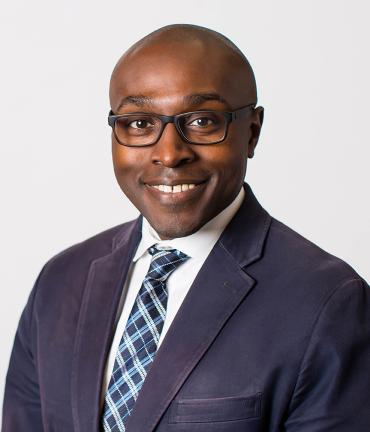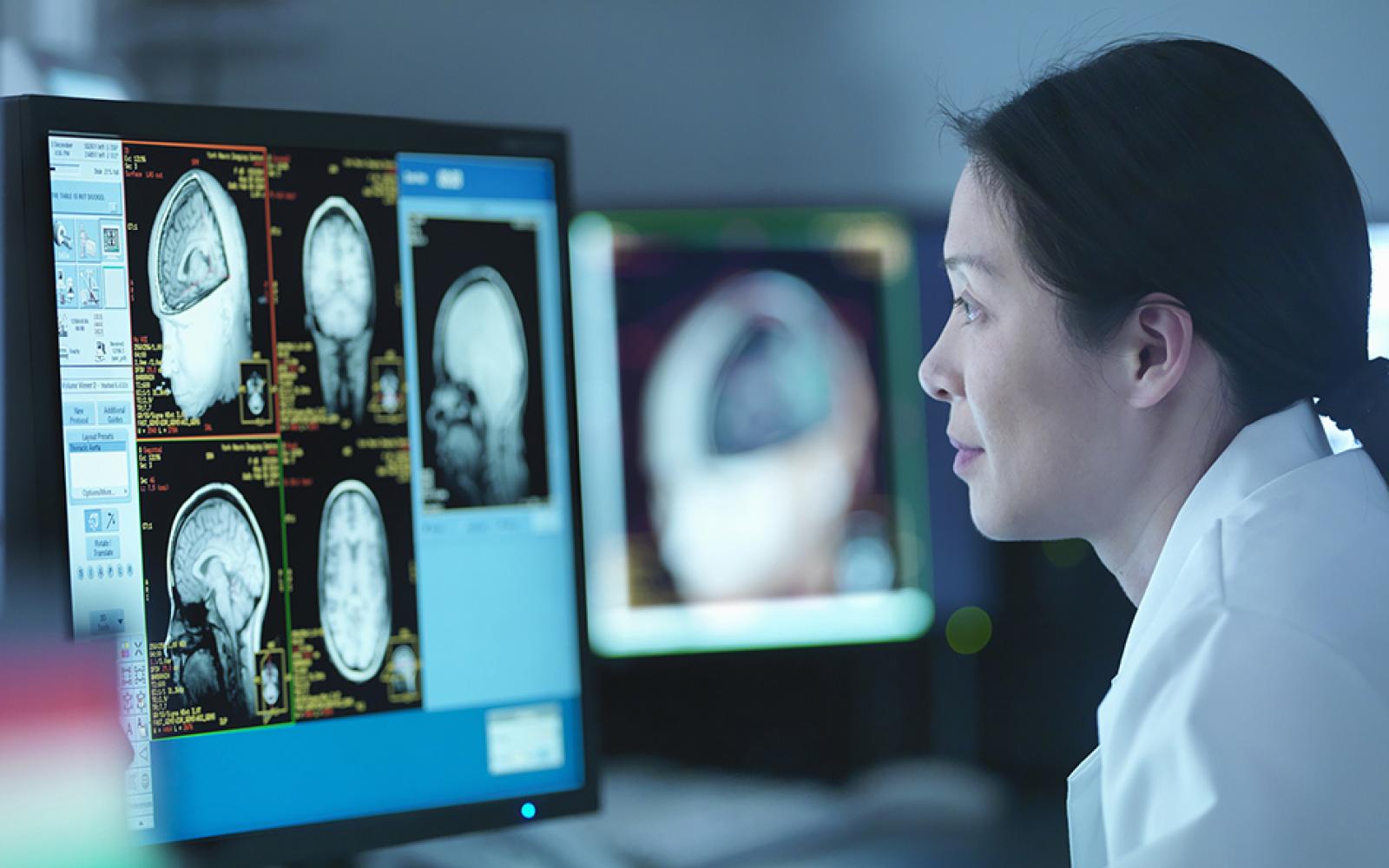
Oligodendroglioma
Oligodendroglioma is a brain tumor arising from oligodendrocytes, the name for cells that normally wrap around and provide support to nerve fibers in the brain.
These tumors can develop anywhere in the brain, but are more commonly found in the frontal and temporal lobes.
Because oligodendrocytes are a type of glial cell, oligodendrogliomas are a specific type of glioma (tumors that arise from glial cells). In general, glial cells provide support to neurons and perform a variety of other functions across the nervous system.
Some general common symptoms of oligodendroglioma include the following:
- Seizures
- Headaches
- Weakness
- Speech and language changes
Additional symptoms depend on the size and location of the tumor. Oligodendroglioma occurring in the frontal lobe or temporal lobe can cause symptoms corresponding to the disruption of normal function in those areas. For example, the frontal lobe of the brain is responsible for many complex functions including personality, behavior, logic and reasoning, and control of movement. Tumors in this region of the brain may correspondingly result in the following symptoms:
- Changes in personality
- Changes in behavior
- Weakness or difficulty with body movements
In contrast, the temporal lobe of the brain is responsible for complex functions including memory and language. Tumors in this region of the brain may demonstrate noticeable symptoms including the following:
- Seizures
- Speech problems
Oligodendroglioma is relatively rare, accounting for about 1.4% of all primary brain tumors.1 In 2017, an estimated 670 new cases were diagnosed in the United States.1 Most oligodendrogliomas occur in adults, although can occasionally occur in infants and children as well.
After obtaining a biopsy for tumor tissue analysis, oligodendrogliomas can be classified into “grades” based on how abnormal the tumor cells look. The lowest grade of oligodendroglioma, grade II, grows slowly and appears slightly abnormal, while anaplastic oligodendroglioma, grade III, is more aggressive, grows more quickly, and appears more abnormal-looking. There is neither a grade I nor a grade IV meningioma. In some cases, an oligodendroglioma (grade II) can progress over time to become an anaplastic oligodendroglioma (grade III). Other cases present as grade III tumors initially.
According to the 2016 WHO classification system,2 the diagnosis of oligodendroglioma and anaplastic oligodendroglioma requires the demonstration of several genetic mutations. Oligodendrogliomas have abnormal chromosomes that are missing sections of chromosomes 1p and 19q, called a “1p/19q co-deletion”. Oligodendrogliomas also must demonstrate a mutation in the genes IDH1 or IDH2. If genetic testing capabilities are not available, or if genetic results are inconclusive, then the oligodendroglioma should be described as “not otherwise specified” (or NOS). The four oligodendroglioma classifications are listed below:
- Oligodendroglioma, IDH-mutant and 1p/19q codeleted
- Oligodendroglioma, NOS
- Anaplastic oligodendroglioma, IDH-mutant and 1p/19q codeleted
- Anaplastic oligodendroglioma, NOS
There is no cure for oligodendroglioma. Depending on the size and location of the tumor, patients with oligodendroglioma are usually first treated with surgery. The primary objective is to remove as much of the tumor as possible, while protecting critical brain function – this is called “maximal safe gross total resection”. Especially since oligodendroglioma can occur near areas of the brain that control body movement, sensation, or language, special measures may be taken to protect these functions. For example, awake surgery with brain mapping is commonly used when tumors are located in the brain regions that control language or movement. This technique allows neurosurgeons to safely identify and preserve critical brain regions.
Chemotherapy and radiation may also be suggested in addition to surgery, especially for patients with anaplastic oligodendroglioma and in cases where the entire tumor is unable to be completely resected.
How well a patient with oligodendroglioma responds to treatment depends on a variety of factors, including the tumor grade (grade II or III), extent of surgical resection, patient age, and patient general health characteristics. Overall, survival rates for oligodendroglioma are difficult to predict, given the rarity of the condition.
In general though, complete surgical removal of the tumor offers the best patient outcomes for long-term survival. For patients with the slower-growing oligodendroglioma (grade II), surgery is often sufficient to remain tumor-free for many years. However, patients will continue to be monitored for both tumor recurrence and progression to a higher grade tumor. It is critical that all patients receive frequent monitoring by a neuro-oncologist for tumor recurrence or regrowth.
Finding information about specific prognoses and survival rates is a personal decision. The current statistics are only summary data, and don’t necessarily reflect results from new or experimental therapies. These data do not determine how individual patients might respond to their treatment – everyone is different. That said, some people may choose to look for this information, which can be found in the most recent CBTRUS Statistical Report, in Tables 21-25.1
- Ostrom, Q.T., et al., CBTRUS Statistical Report: Primary brain and other central nervous system tumors diagnosed in the United States in 2010-2014. Neuro Oncol, 2017. 19(suppl_5): p. v1-v88.
- Louis, D.N., et al., The 2016 World Health Organization Classification of Tumors of the Central Nervous System: a summary. Acta Neuropathol, 2016. 131(6): p. 803-20.
Surgical Specialists
This content was reviewed by UCSF Neuro-Oncology Fellow, Robin Buerki MD.





